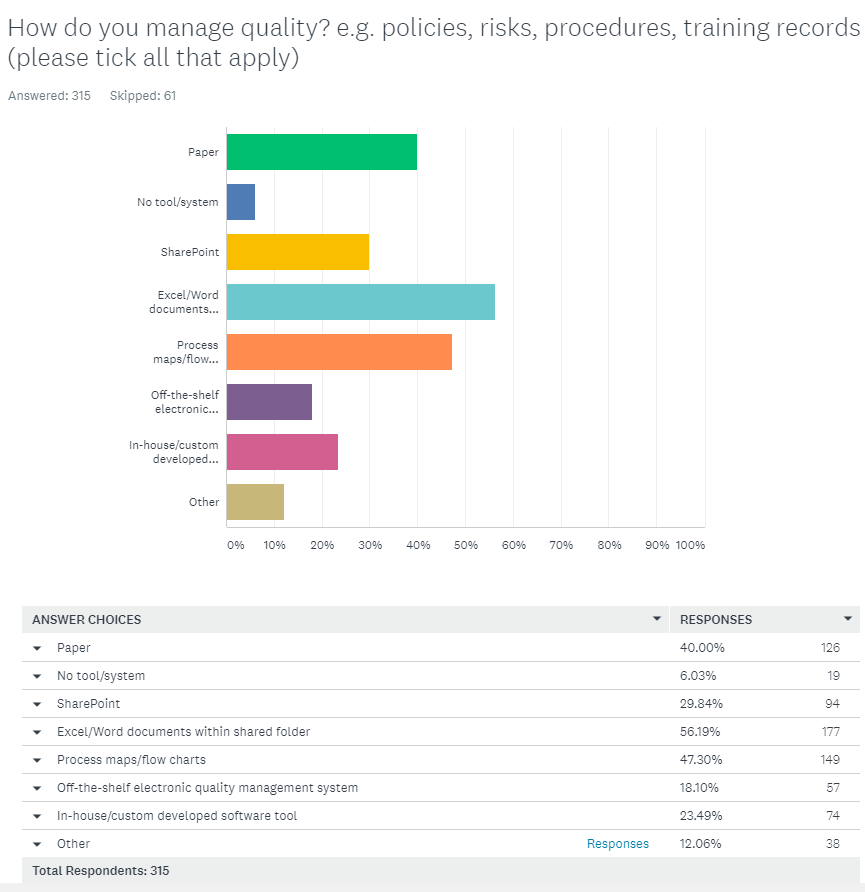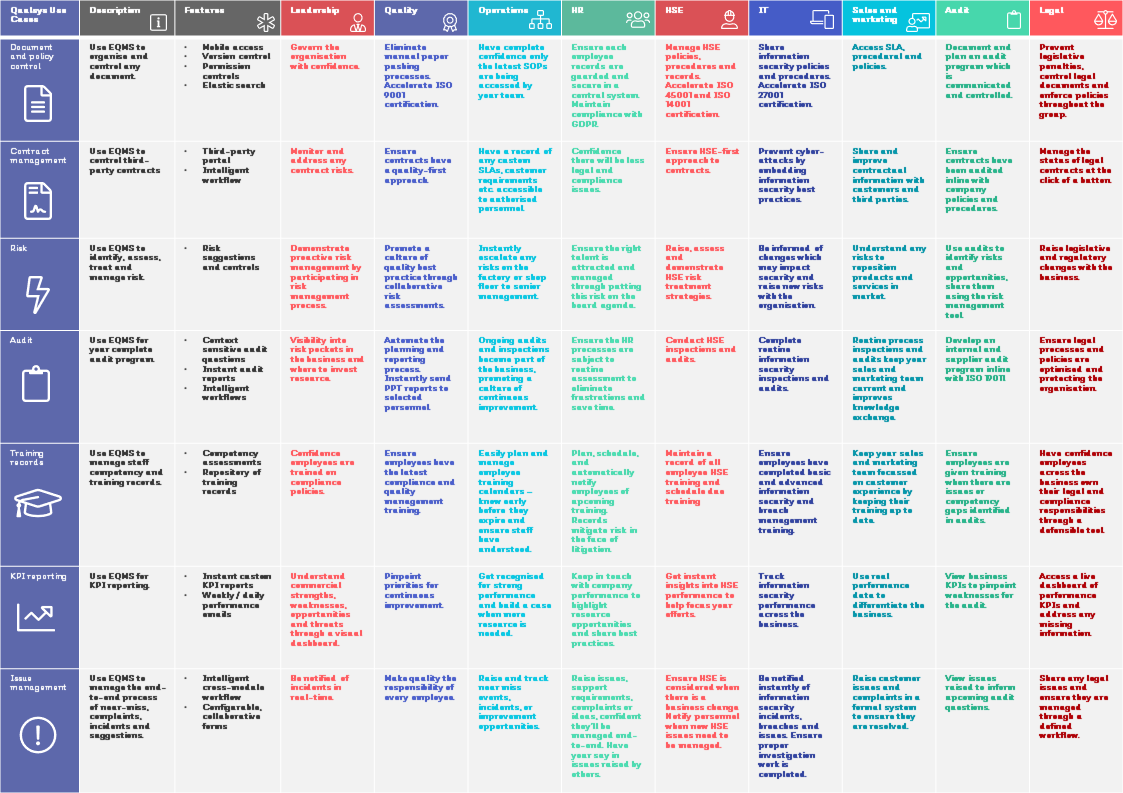Want to contribute to this article?
Many ISO standards require you to determine, monitor and measure output. However, they do not prescribe which key performance indicators (KPIs) or quality performance indicators (QPIs) you must track, how to track them or even when to do so. These are for you to decide. Read more: ISO 9001:2015 KPIs to track.
According to the Global Quality Survey, a large majority of quality managers are spending a significant amount of time monitoring waste, non-conformities and complaints. Read more here.
But what about brand reputation?
In this video, John Oakland shares how quality initiatives can transform operations over time, but customer perceptions may still not change without additional after-care.
Watch John Oakland: Redefining Quality / Protecting Reputation Presentation / at the EQMS User Group
This Harvard Business Review article says: "Without a clear, measurable, value-creating goal, companies risk expending huge amounts of human and capital resources without delivering any real financial return."
So, what is your customer's perception of your brand? What matters the most to your customers? And how are you going to measure the change over time?

Net Promoter Score has grown in popularity over recent years. While many organisations are using Net Promoter Score in some way, few are maximising their use of it.
Nathan Broad, Group IT Director at Synexus, is a black-belt six-sigma expert who's worked with a number of large global organisations. Nathan is an advocate of implementing Net Promoter Score and has led a number of highly successful projects.
Below, we interview Nathan and hear how he's used Net Promoter Score as a quality performance indicator.
Qualsys: Why should businesses use Net Promoter Score?
Nathan Broad: Many organisations send out feedback surveys. However, these surveys are typically too long, biased and lead the customer down a particular route.
Net Promoter Score surveys do not lead the customer. Instead, in a Net Promoter Score survey, your customer or prospect will likely just talk about what's important to them. This means you can get straight to point and understand what they want – what was good or what was bad. You don't need to spend hours analysing the responses to 25 or more questions which were probably not important to the customer."

Can you tell us a bit about your experience implementing Net Promoter Score?
I first implemented Net Promoter Score about eight or nine years ago. At this time, Net Promoter Score was fairly new. We found there was value using Net Promoter Score for customer loyalty research across all business units.
We integrated Net Promoter Score with our CRM, salesforce.com. It was set up so that after an interaction with our customer, a survey was sent out.
We had a set process based on the score customers gave. If a customer was a detractor – those who give a score of between 0 and 6 – a member of the sales team or an account manager was notified and set an action that they needed to call the customer.
We then used this feedback to help understand how the customer was feeling and improve the quality of our product. Over time, this feedback helped improve the Net Promoter Score from around 0 to +30. It helped because we were focusing on what really mattered to the customer.
What mistakes should brands avoid?
Net Promoter Score isn't a 'once a year' activity. Many organisations send out a survey once, get the feedback and then don't do anything with it. Net Promoter Score needs to be a virtuous cycle of feedback which you can use to make real quality improvement.
What are the most important considerations for planning a Net Promoter Score campaign?
- Only survey the decision-makers and the influencers.
- Think about the volume of customers you want to survey. This will reflect the channel you use to collect the data. Expect a:
- 40%–50% response rate by phone (small volumes of customers)
- 3%–10% response rate by email (large volumes of customers)
- Consider how you are going to feed-back and review:
- How will you manage micro actions? e.g. will you use EQMS to assign responsibility?
- How will you manage macro action?

How EQMS helps manage the Net Promoter Score
EQMS is a flexible electronic quality management system which can be used to plan, track and manage business processes. Many organisations, including Bunzl and MBG Insurance, use EQMS Issue Manager as a form-based call management system.
The enforced workflow triggers actions and manage activity through a pre-defined process. For more information about using EQMS Issue Manager, download EQMS datasheets here.










Share your thoughts on this article